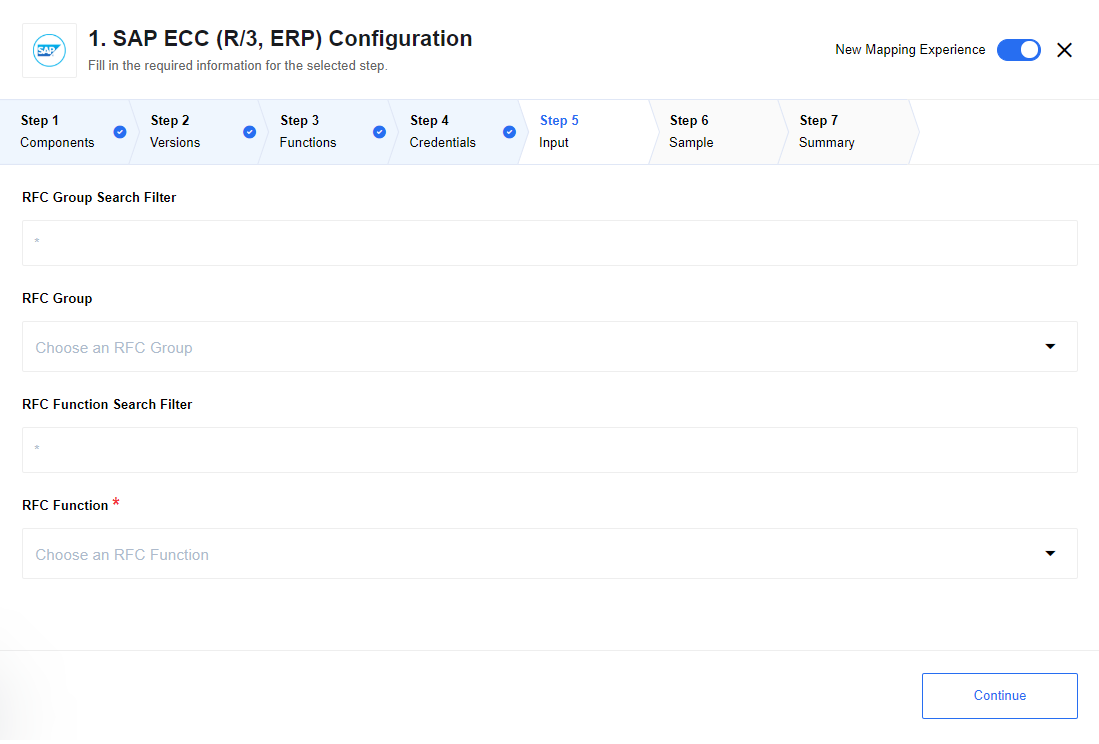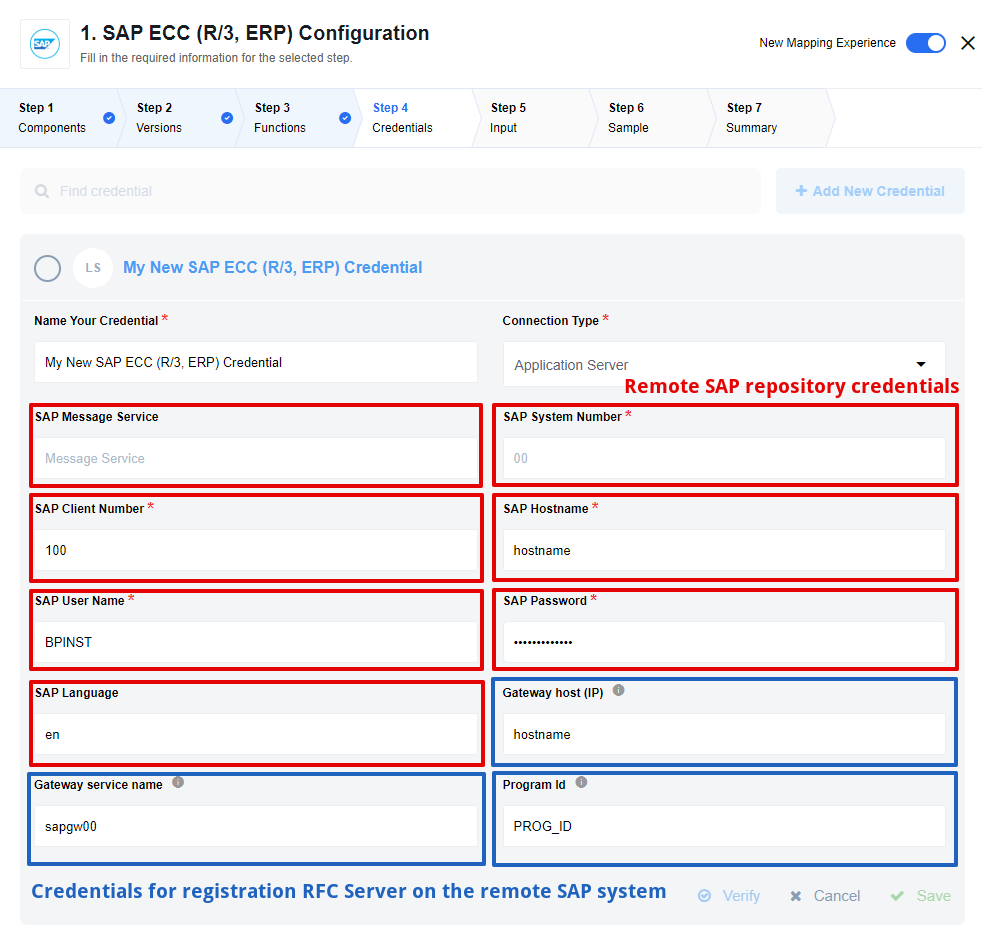SAP ECC (R/3, ERP) triggers
RFC Server (Only for Realtime flows)
Generic trigger which gives possibility to receive RFC calls from the SAP ECC platform:

RFC Server. Config fields
RFC Group Search Filter- wildcard expression is used for filtering groups, default value:*RFC Group- group of RFC functions, selected value is used by RFC Function field. Shows 100 groups that match regular expression provided inRFC Group Search Filterconfiguration parameter.RFC Function Search Filter- wildcard expression is used for filtering functions, default value:*RFC Function- Required. Function to be called by the SAP ECC system. Shows 100 functions that match regular expression provided inRFC Function Search Filterthat belongs to group provided: inRFC Groupconfiguration parameters.
RFC Server provides an opportunity to expose any function, which exists on the remote SAP RFC repository. For this purpose, credentials for the connection to the remote repository and RFC Server connection should be provided. See example bellow:

Additionally, to this, the server supports FTP_R3_TO_CLIENT function can receive binary data from the remote sap system and upload this data to attachments.
Configuration steps on the SAP ECC side
1.Ensure, that registration of tp EIO_SAP_CONNECTOR from integration platform host allowed.
By default the gateway is not allowing the program ID EIO_SAP_CONNECTOR to be registered from the integration platform host. In this case, RFC connection fails error below when try to extract data from SAP using SAP ECC (R/3, ERP) Connector.
LOCATION SAP-Gateway on host <hostname> / sapgw
ERROR registration of tp <program id> from host <external host> not allowed
There are two possible reasons:
- Parameter
gw/acl_mode = 1and not reginfo file has been set. This is the default value for NEW INSTALLATIONS for Netweaver 7.0x since December 2012 (including 7.20) and for Netweaver 7.3X since August 2012 - There is a reginfo file that doesn’t allow the registration of that external program
So, The “reg_info” file from the SAP gateway that appears in the error message (“SAP-Gateway on host
/ sapgw ") creating a line that allows this registration. The location of the "reg_info" file is specified by parameter `gw/reg_info` and should contain lines like:
#VERSION=2
P TP=<program ID> HOST=<external host> CANCEL=internal,<external host> ACCESS=*
...
# the following lines should be the LAST lines in the reginfo
#
P TP=* HOST=<LIST> CANCEL=<LIST> ACCESS=<LIST>
P TP=* HOST=local
Also, you can use the Gateway ACL editor. See details by the link.
Then, reload the new settings via transaction SMGW.
2.Create RFC Destination ‘EIO_SERVER’ using transaction SM59

- New destination must have type T (TCP/IP Connections)
- Select Registered Server Program activation type
- Specify Program ID which specified in the component credentials
